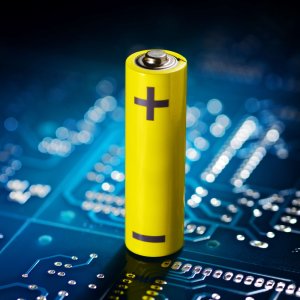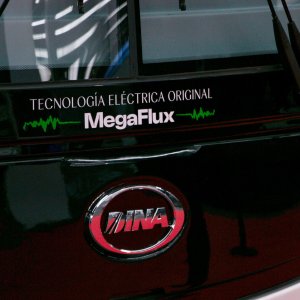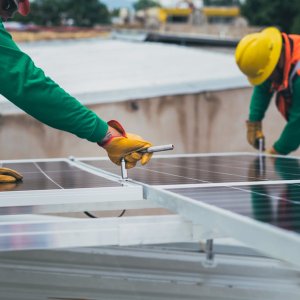EVERHAUL - Retrofit is the way

STORY INLINE POST
As the world continues its race to transform the vehicle industry with lower emissions to fight climate change, one key strategy to reduce carbon emissions is to transition from internal combustion engine (ICE) vehicles to electric vehicles (EVs). It is easy to recognize the size and complexity of such an endeavor, but this doesn’t mean it is not necessary. With time, options for retrofitting existing vehicles from ICE to EV have become more attractive and a viable solution to accelerate this transition in the short term.
It is estimated that there are over a billion vehicles on the road today, most of which run on fossil fuels. This contributes to approximately 14% of global greenhouse gas emissions. Given the number of vehicles on the road, it will take decades before we can see a significant change in the percentage of electric vehicles on the road. Traditional OEMs and startups are not pushing fast enough to have the capacity to offer new EVs to accelerate this. This is why retrofitting existing vehicles becomes key to increasing the rate of vehicle emissions reduction.
What is a retrofit? It is the process of removing the internal combustion components like the motor, fuel tank, injection system, motor harness and exhaust system, and motor-driven components, such as the compressor and hydraulic pump, and replacing them with their equivalent electric components: electric motor, motor controller, DC-DC converter replacing the alternator, electric compressor and hydraulic pump if required. In addition, you develop a battery pack system that can provide the necessary range required for daily operations. These are installed in a way that maximizes the use of available space and reduces the impact on the vehicle design, all while maintaining the overall safety of the vehicle.
It is important to note that this entire process is done following automotive standards, working closely with the chassis manufacturer to understand weight distribution, safety features, integration with the chassis components, and finally, thorough testing and verification are conducted to ensure the vehicle operates as expected.
Recently, countries like France, Germany, and the US have passed legislation to permit vehicles to be retrofitted from ICE to EV. These steps accelerate the transition to cleaner transportation and increase the number of people who will have access to electric vehicles as a result of the lower cost. In Mexico, the government of Mexico City has sponsored the retrofiting of a public transport bus operated by RTP to test the technology and study its feasibility in real-world conditions. If successful, it will demonstrate that retrofits are an excellent option for cities looking to introduce electric buses in their mass transportation systems at lower costs.
Companies will benefit from a significantly lower Total Cost of Ownership (TCO) for the retrofit compared to a new diesel vehicle. You will receive the benefits of the low operating cost of an EV without the high cost of purchasing a new vehicle. In some cases, this reduction in the total cost of ownership can be as high as 35% compared to new EVs. It's also important to consider that both the new vehicle and the retrofit provide the same performance.
In addition to cost savings, retrofitting vehicles from ICE to EV can also extend the lifespan of the vehicle. By doing the retrofit, you are replacing the components that introduce uncertainty and a higher operating cost over time with a more simple, reliable, and cost-effective solution. For commercial vehicles, manufacturers design chassis that are able to last up to a million kilometers or more. Many companies decide to change their fleet not because the chassis is in poor condition, but because the diesel engine maintenance cost is not worth it. Retrofitting will give the vehicle a new lease on life, potentially extending its lifespan by another 10-15 years. By extending the lifespan of vehicles, we can reduce the environmental impact of manufacturing new vehicles, lowering the amount of waste generated by disposing of old vehicles. According to a study by the International Energy Agency, this can be as much as 20% of its total lifetime emissions.
It does not matter if you are a regular person looking to switch to EVs for a daily commute to the office, a small business looking to reduce operating costs, or a company searching for more viable options to switch your fleet to electric. In this case, with a fixed budget for new electric vehicles, you can transform more vehicles to electric if you choose to retrofit. In addition, the lower range required to operate in urban areas improves the feasibility of the retrofit because of the lower capacity required for the batteries.
As good as it sounds, there are still challenges to overcome. However, companies like MegaFlux are working hard to create retrofit solutions for customers through its EVERHAUL program. A well-maintained vehicle can last for decades. By performing a retrofit between years five and nine of its lifespan, you now have an efficient and reliable vehicle for the years to come. Retrofits can be used for any vehicle in terms of size, from a small passenger car to a 40-ton class 8 truck. The best-case daily usage scenario is below 250km for passenger vehicles and 100km to 200km for light-duty and medium-duty vehicles.
With time, more companies will start offering retrofit solutions, so it is important that you choose the correct partner for this endeavor, focusing on technology availability, local technical support, and the capacity to support your project during the lifetime of the vehicle.








 By Felipe Gallego Llano | Electromoiblity Expert -
Wed, 06/07/2023 - 09:00
By Felipe Gallego Llano | Electromoiblity Expert -
Wed, 06/07/2023 - 09:00














